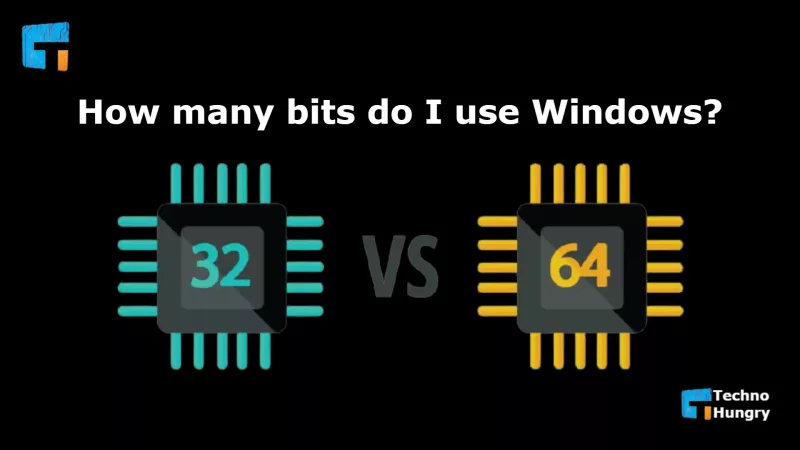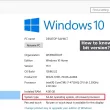How many bits do I use Windows? The touch of information technology is the touch of a magic wand. The touch of this technology can change a person, a society, a country, the world so fast that the world has gone a few steps further as you think about it. And the biggest surprise of this information technology is a magic box. What? Surprised!
How many bits do I use Windows?
Honestly, a magic box is playing a role in changing and improving so much for us today. Well, no more secrets. There is no such thing as a magic box. In fact, I call a computer a magic box. Today, the tide of digital development has reached the villages with the touch of the computer. Now computers are everywhere in the town. The city is more surprising.
However, there is a reason behind writing this today. Today a friend of mine bought a new computer. He believes in a new computer and goes to [Windows Setup] to give me the operating system and ask my help. His first question was,
What are 32 bit and 64-bit windows?
And what is the difference between them? I was able to explain to him, now I will tell you the punch of this bit. You must have understood what I am writing today. Let’s learn the difference between 32 bit and 64 bit without further ado.
With 32 bits and 64 bits, we often see x86 bits written. Let me tell you here, 8 bit and 32-bit kernel seim. So I don’t think I need to say anything about that bit. Our computers have Kernel Patch Protection which is related to the security of Windows.
The kernel integrates computer software with processors, hardware, device drivers, and other operating systems based on this kernel. This kernel patch protection of Windows is much stronger at 64 bit than 32 bit.
The memory addressing the power of the 32-bit operating system is much less than the memory addressing the violence of the 64-bit operating system. This is the main reason for this difference. Now you may say this.
What is memory addressing?
Memory addressing is when our processors work with any data. Its primary function is to keep the data somewhere temporarily, and we use RAM to store it. Now you may want to know the calculation of addressing this memory. So let’s learn how to calculate 32 bit and 64-bit memory addressing.
Suppose your processor will now work with 1 bit. In this case, the processor will use 2 memory locations for 1 bit (binary 0 and 1). If you work with 2 bits, it will be doubled. That is, it will use 4 memory locations.
In this way 2 * 2 * 2 = 6 memory locations for 3 bits. 2 * 2 * 2 * 2 = 18 for 4 bit work, 2 * 2 * 2 * 2 * 2 = 32 memory locations for 5 bit work. If we calculate for work up to 32 bits in this way, then it stands at 232 = 429496296. Which if we convert to gigabytes, then it will be 4 gigabytes.
So you understand that the 32-bit processor supports up to 4 GB of memory (RAM). In other words, if we want to work on a 32-bit processor with more memory than the 32-bit operating system, then that 4 GB of memory will not work. This means that if you install 32 bit Windows on a PC with 6 GB RAM, you will use only a 4 GB RAM system, and the remaining 4 GB RAM will be idle.
Simply put, a 32-bit processor will not work with more than 4 GB of memory (RAM). And if the processor wants to work with 64 bits, then 264, which results in 16.4 exabytes which are more than gigabytes, terabytes. So a 64-bit processor can work with 16.4 exabytes of RAM at the same time. And 64 bit can work with such a vast amount of memory (RAM) that such a large amount of RAM has not come into the market at present. Converting 18.4 exabytes to gigabytes stands at 1985 crore gigabytes.
The 32-bit processor will not be able to work with more than 4 GB of memory. Still, the 64-bit processor will work with the massive memory RAM updated in the market from 4 GB. All software, games, video graphics, Adobe graphics products, or other memory devices work with 64 bits. They actually say that a 64-bit operating system will work better because a 64-bit operating system means working with a lot of memory RAM.
In fact, 32-bit processors and operating systems are for older devices of the previous model. If your PC’s RAM is less than 4 GB, then I would say you use 32 bit. Now you say,
Why not use 64 bit?
In fact, you can use 64 bits in 4 GB, but it will not work. You can use all the software on your PC using 64 bit for 4 GB will even run. But they will work very slowly. But if you use the original software made for 64 bit, it will not work correctly.
Again, suppose your PC has more than 4 GB of RAM, but you have given the operating system 32 bits, but you can not work like mind. Because if your active power is not more than 4 GB, the rest of your memory will be a bit lazy.
Also Read: How to know your windows bit version?
Hope you find your question answer “How many bits do I use Windows.” If you like the post, then share it with your friend and social media.


